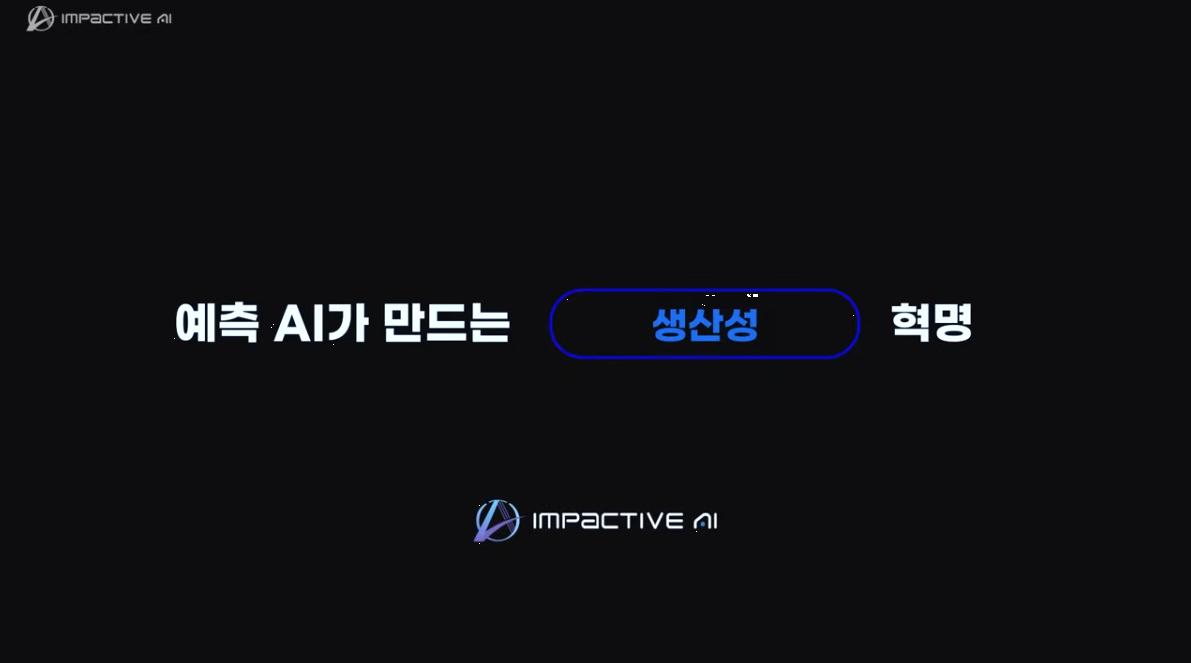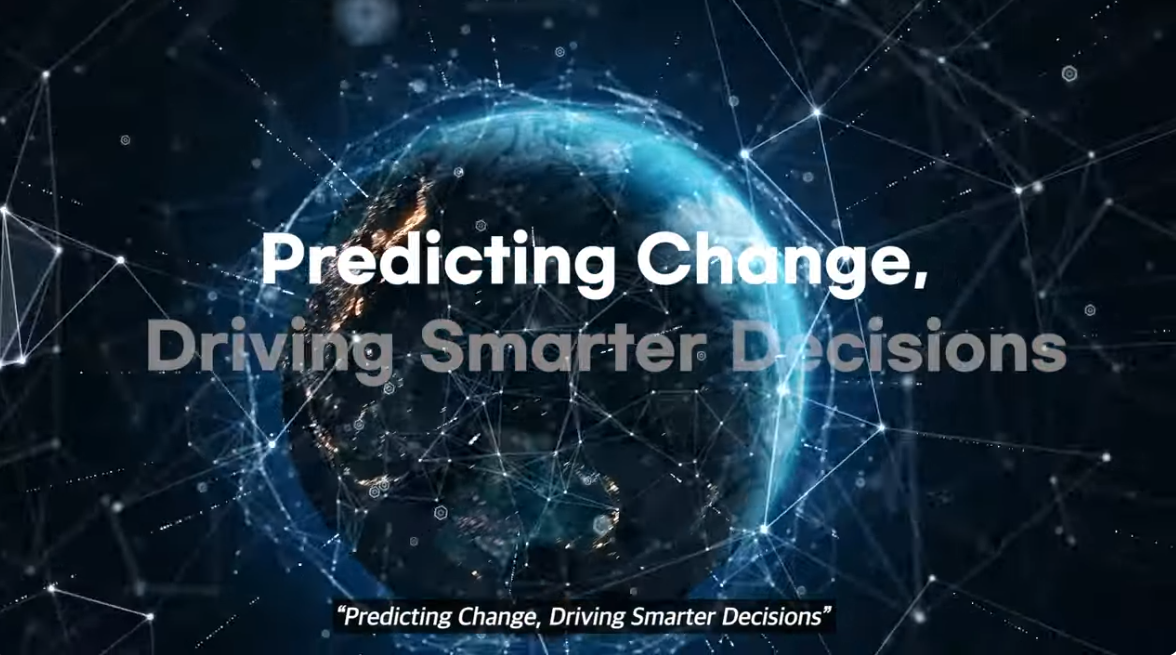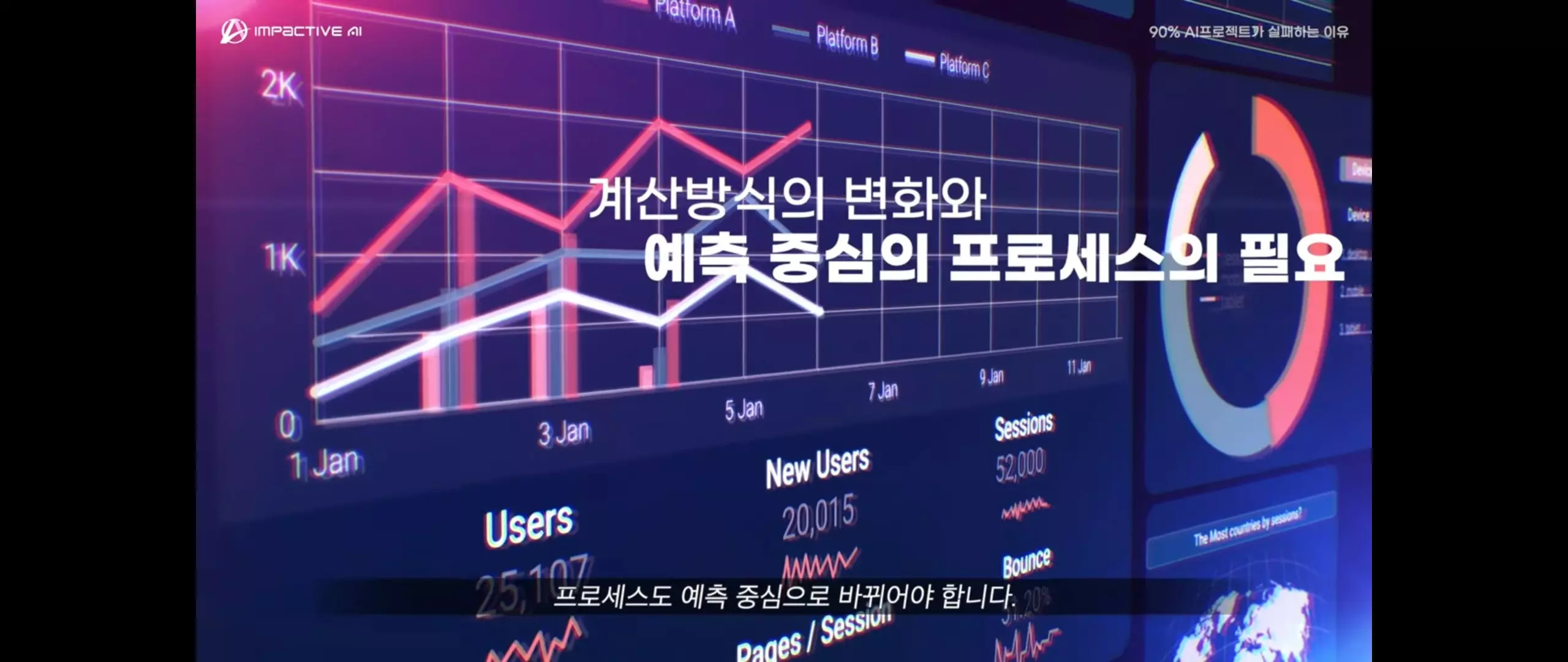Complete Guide to 2025 AI Technology Innovation Trends That Manufacturing CEOs Are Watching

As digital transformation accelerates, corporate decision-makers stand at a more critical crossroads than ever before. Particularly in manufacturing and retail sectors, technology innovation processes centered on AI are demanding fundamental changes in business models beyond simple efficiency improvements.
According to a recent survey by the World Economic Forum (WEF), corporate competitiveness over the next five years is expected to be determined by technological innovation capabilities. This means that technology innovation has become a matter of survival rather than choice.
This article provides an in-depth analysis of key technology innovation trends by industry. It particularly focuses on industrial applications of generative AI and real-time data-driven decision-making systems. If you want to learn more about expert analysis of major technology trends in 2025, please refer to [Gartner's Top 10 Strategic Technology Trends].
Through this report, readers can examine innovation cases from global leading companies and practical implementation strategies. Additionally, they can gain insights for establishing risk factors and response measures related to technology adoption, as well as medium to long-term investment strategies.
Most importantly, through customized innovation strategies considering the characteristics of each industry, corporate decision-makers can solve the challenges of digital transformation they face.
AI Operating System Implementation Methods Proven by Revenue Growth Effects
Evolution of AI-Based Back Office Automation
The biggest change facing the financial industry is the complete automation of back office operations centered on AI technology.
Global financial companies such as Goldman Sachs and JPMorgan have been introducing AI systems in various business areas including transaction processing, data reconciliation, regulatory compliance, and fraud detection since 2024, significantly improving operational efficiency.
Particularly noteworthy is that AI-based autonomous decision-making systems are expanding into real-time risk assessment. This signifies a fundamental change in risk management systems, which are the core competitiveness of financial institutions, beyond simple task automation.
Innovation in AI-Based Demand Forecasting and Risk Management
Demand forecasting in the financial industry is evolving to a new dimension through AI and big data analysis. Financial institutions approaching 2025 are utilizing AI technology to predict market demand more accurately, manage risks effectively, and strengthen data-driven decision-making.
Particularly, the banking sector is focusing on proactively identifying and managing vulnerable sectors through AI-based risk management systems.
Through real-time data analysis, they can respond immediately to market volatility and evaluate customers' creditworthiness and repayment capacity more accurately. This plays a crucial role in securing stable profitability even in an interest rate reduction environment. If you want to learn more about the operating principles of predictive AI models and various industry application cases, please refer to [What are Predictive AI Models? - Definition, Principles, Application Cases, Advantages and Limitations, Trends].

The card industry is predicting demand changes through private consumption pattern analysis. AI algorithms analyze consumer payment data to identify consumption trends by industry and region, and based on this, establish marketing strategies and manage risks.
In 2025, stable growth is expected based on private consumption recovery, and AI technology will be a key element supporting this growth.
In the securities industry, AI-based asset price prediction and portfolio optimization are expected to become more sophisticated. By supporting investment decision-making through real-time market data and news analysis, AI technology is expected to play a crucial role in effectively managing risks, particularly in highly volatile market environments.
In the specialized credit finance sector, AI technology is used to predict loan demand and manage risks. While discovering new revenue models in response to the interest rate reduction environment, they are improving loan screening accuracy through AI-based credit evaluation models.
Intelligence in Customer Service
In the customer service area, AI chatbots and AI assistants are evolving. In 2025, these AI-based customer services are expected to provide more sophisticated services, going beyond simple inquiry responses to comprehensively analyzing customers' financial situations and proposing customized financial products.
Introduction of CBDC and Quantum Computing
Another noteworthy change in the financial industry is the introduction of Central Bank Digital Currency (CBDC) and quantum computing technology.
Starting with China's digital yuan, CBDC adoption is accelerating in major countries including the Eurozone and Brazil, which is expected to dramatically improve the efficiency and transparency of existing financial systems.
However, during this innovation process, the vulnerability of existing cryptographic systems due to quantum computing adoption is emerging as a new challenge.
In response, the financial sector is actively promoting the development of Post-Quantum Cryptography and expanding investments for data security and privacy protection.
Smart Manufacturing System Success Cases That Reduce Labor Costs
Software-Centered Manufacturing Innovation and Data-Driven Operations

As digital transformation in manufacturing accelerates, software and data analysis are fundamentally redefining manufacturing processes. According to a recent Deloitte survey, 93% of global manufacturing companies recognize AI as a core driver of growth and innovation.
Particularly in 2025, the adoption of advanced software solutions such as real-time data analysis, predictive modeling, and operational simulation is emerging as core competitiveness in manufacturing.
Real-time data analysis systems are optimizing production efficiency by collecting and analyzing data generated at all stages of production lines. Through this, manufacturing companies are identifying production bottlenecks in real-time, optimizing resource utilization, and improving energy efficiency.
Smart Manufacturing Innovation Based on AI and IoT
The combination of AI and IoT in manufacturing sites is bringing revolutionary productivity improvements. AI is being utilized in various areas including quality control, predictive maintenance, and production optimization, particularly playing a crucial role by accounting for 51% of total AI utilization in smart production.
AI-based predictive maintenance systems are minimizing equipment downtime by monitoring real-time status of manufacturing equipment and detecting potential problems in advance. The combination of sensor data and AI algorithms enables preventive maintenance by early detection of equipment anomalies and predicting optimal maintenance timing.
In quality control areas, AI-based computer vision systems are detecting product defects in real-time. This enables more accurate and consistent quality control than human visual inspection and shows effects of significantly reducing defect rates.
Utilization of Predictive Analytics and Digital Twins

Manufacturers are strengthening data-driven decision-making in areas such as demand forecasting, inventory management, and production planning by utilizing predictive analytics technology.
Particularly, the introduction of digital twin technology enables virtual simulation of actual production lines, allowing various production scenarios to be tested and optimized in advance.
Digital twins of production lines reflect changes in physical production environments in real-time, enabling identification and improvement of production process inefficiencies. Real-time data can be collected through sensors and IoT devices, accurately reflecting the state of reality systems.
Furthermore, future states and potential problems can be predicted in advance.
Additionally, when launching new products or changing production lines, risks can be minimized by first verifying in virtual environments. Safe experiments can be performed in virtual environments, and precise analysis of complex scenarios is also possible.
Companies can establish optimal operational strategies based on results derived through digital twins and perform more sophisticated and reliable predictive analysis by combining physical principles with real-time data. If you want to learn more about digital transformation strategies and specific implementation plans for manufacturing, please refer to [Manufacturing Innovation Strategies in the Digital Transformation Era].
Innovation in Microfactory and Smart Modular Production Systems
Another innovative change in manufacturing is the emergence of microfactories. Microfactories utilizing AI and automation technology enable efficient production even in small spaces and can dramatically reduce costs and energy consumption compared to existing large-scale factories.
The core of microfactories lies in utilizing modular production cells. This enables rapid reconfiguration of production lines and allows implementation of production systems optimized for high-variety, low-volume production.
Particularly, the modular structure that enables easy updates and replacements is attracting attention as an innovative alternative that can overcome the limitations of traditional manufacturing facilities' large-scale facility investments and long preparation periods.
Importance of OT-IT Integration and Cybersecurity
One of the most important challenges in the digital transformation process of manufacturing is the effective integration of Operational Technology (OT) and Information Technology (IT) systems. Smooth integration between traditional manufacturing site OT systems and new digital IT systems is an essential element for smart manufacturing success.
However, the importance of cybersecurity is becoming more prominent during this integration process. Particularly in manufacturing environments connected through IoT sensors and networks, vulnerability to cyber attacks may increase.
In response, manufacturing companies are building multi-layered security systems including endpoint security, network segmentation, and real-time monitoring systems.
Retail Technology Innovation Through AI-Based Personalization and Demand Forecasting
Innovation in AI-Based Demand Forecasting and Inventory Management

The introduction of AI technology in the retail industry is leading the most innovative changes in demand forecasting and inventory management.
Walmart's AI-based inventory management system is a representative example of this innovation. This system predicts accurate demand by analyzing various variables in real-time, including past sales data, seasonal trends, weather forecasts, and local events.
Particularly, Walmart's AI system enhances prediction accuracy by utilizing advanced AI technologies such as deep learning-based time series prediction models, ensemble learning techniques, and Bayesian optimization.
For example, when predicting sudden demand increases for weekend barbecue-related products in specific regions, it comprehensively analyzes weather forecasts, local festival information, and sales data from similar past situations to automatically optimize inventory for barbecue grills, charcoal, meat, etc.
More noteworthy is Walmart's AI-based supplier negotiation system. This system achieved a 64% success rate and an average 1.5% cost reduction effect in transactions with 89 suppliers.
The AI system establishes optimal order quantities and negotiation strategies by analyzing each supplier's past transaction data, market trends, inventory situations, and predicted demand. For example, when inventory shortage for specific products is predicted, the system automatically initiates negotiations with relevant suppliers and presents specific negotiation conditions considering market prices and competitor trends.
These AI systems were implemented through complex applications of predictive analysis, optimization algorithms, and reinforcement learning models.
Predictive analysis models predict future demand and price trends by combining time series analysis with machine learning techniques, optimization algorithms determine optimal order quantities and prices through mathematical models, and reinforcement learning models continuously improve strategies by learning from each negotiation result.
Implementation of Personalized Shopping Experiences
Retailers are using AI to analyze individual customers' preferences and purchasing patterns, providing customized products and services based on this analysis. In fact, these AI systems also serve as personal shoppers that provide customized product and event information by analyzing customers' purchase histories.
AI-based personalization strategies are evolving into integrated approaches that consider customers' lifestyles and entire purchase journeys beyond simple product recommendations. Through real-time behavior analysis and situational customized recommendation technology, they are not only achieving revolutionary improvements in customer experience but also gaining results of improved customer loyalty and increased sales.
Supply Chain Optimization and Data-Driven Operations

Retailers are strengthening supply chain resilience by utilizing AI and machine learning technologies. They are enhancing operational efficiency through real-time inventory tracking, automated ordering systems, and optimized logistics route design.
Particularly, combination with blockchain technology is contributing to securing transparency throughout the entire process from product production to sales and strengthening consumer trust.
This technology innovation is particularly prominent in social commerce platforms centered on Generation Z consumers. TikTok Shop and Instagram Shopping are creating new consumption experiences through AI-based personalized product recommendations and real-time trend analysis.
Industry-Specific Technology Innovation Trends and Corporate Challenges
Technology Innovation Trends and Implications Across Industries
Technology innovation across industries in 2025 shows clear direction.
AI technology has now established itself as an essential competitive element rather than an option, evolving into core operational systems for companies from financial industry risk management to manufacturing smart factories and retail demand forecasting.
What's noteworthy is that as boundaries between industries break down, convergence of technology innovation is accelerating. Traditional industry distinctions are becoming meaningless with combinations of finance and retail, integration of manufacturing and service industries, presenting both new opportunities and challenges to companies.
Corporate Challenges and Response Measures
Amid these changes, companies are facing new challenges.
Above all, establishing data-driven decision-making systems is urgent. Real-time data collection and analysis, AI-based predictive model construction, and rapid decision-making capabilities utilizing these will become core competitiveness across all industries.
Along with this, securing digital talent and innovating organizational culture are also important challenges. It's essential to cultivate talent capable of effectively utilizing AI and digital technologies and establish a data-centered decision-making culture.
Additionally, preparation for cybersecurity and ethical AI utilization must be strengthened. As technology innovation accelerates, corporate responsibility for data security, privacy protection, and AI ethics will grow even greater.
Conclusion
The most important aspect in companies' journey toward 2025 is 'balance'. A gradual approach considering organizational acceptance capacity and market readiness is needed while not missing the speed and direction of technology innovation.
True innovation cannot be achieved through technology adoption alone. Organizational culture, people, and processes must change together, which requires long-term investment and patience.
Particularly, top management's firm commitment and leadership will be more important than ever.
Ultimately, technology innovation should aim for coexistence of humans and environment, and sustainable growth. Companies must continuously seek ways to create both economic and social value through technology innovation.
This will be the core challenge that companies preparing for 2025 technology innovation must not miss.


.svg)
%202.svg)
.svg)


.svg)
















.svg)